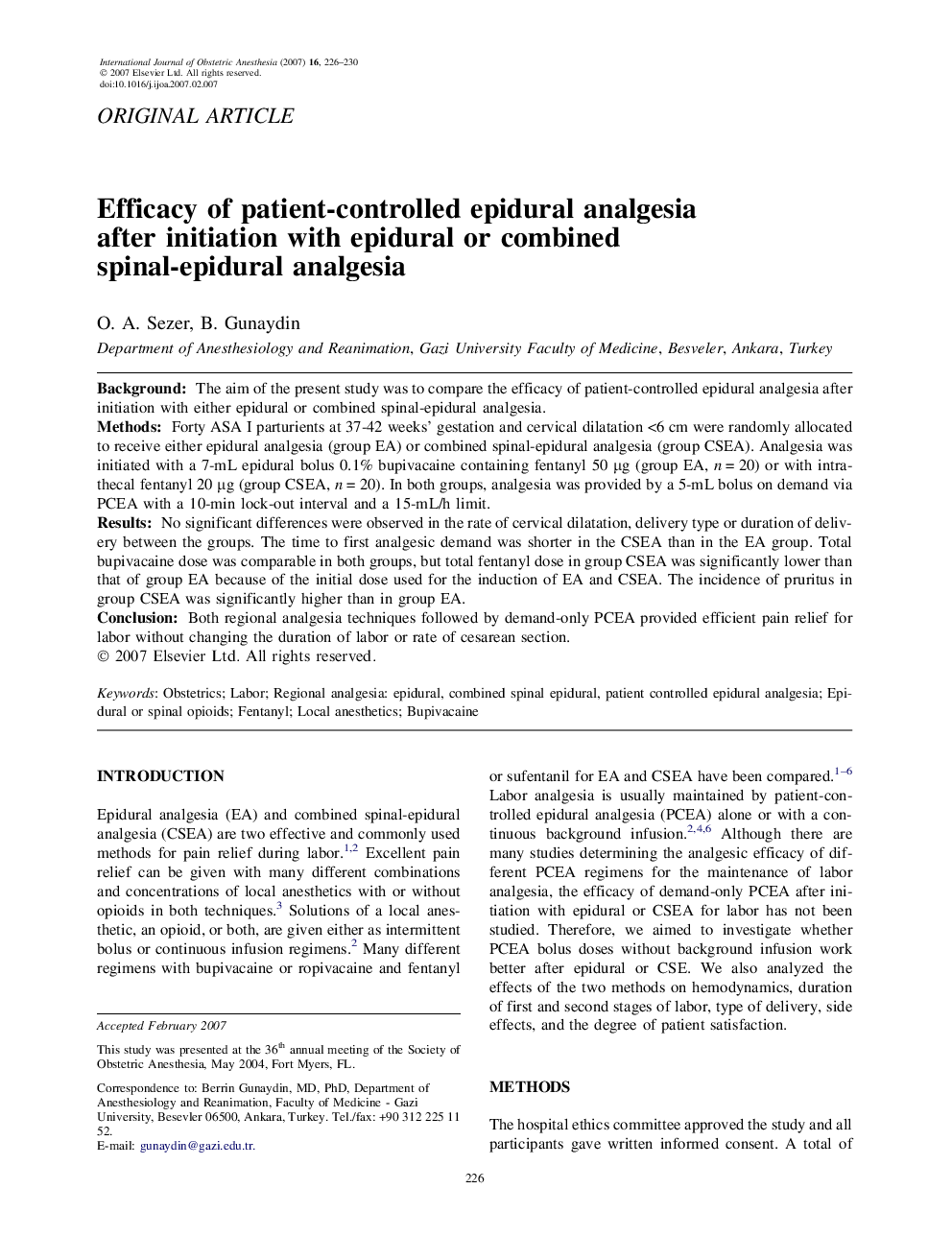| کد مقاله | کد نشریه | سال انتشار | مقاله انگلیسی | نسخه تمام متن |
|---|---|---|---|---|
| 2758587 | 1567553 | 2007 | 5 صفحه PDF | دانلود رایگان |

BackgroundThe aim of the present study was to compare the efficacy of patient-controlled epidural analgesia after initiation with either epidural or combined spinal-epidural analgesia.MethodsForty ASA I parturients at 37-42 weeks’ gestation and cervical dilatation <6 cm were randomly allocated to receive either epidural analgesia (group EA) or combined spinal-epidural analgesia (group CSEA). Analgesia was initiated with a 7-mL epidural bolus 0.1% bupivacaine containing fentanyl 50 μg (group EA, n = 20) or with intrathecal fentanyl 20 μg (group CSEA, n = 20). In both groups, analgesia was provided by a 5-mL bolus on demand via PCEA with a 10-min lock-out interval and a 15-mL/h limit.ResultsNo significant differences were observed in the rate of cervical dilatation, delivery type or duration of delivery between the groups. The time to first analgesic demand was shorter in the CSEA than in the EA group. Total bupivacaine dose was comparable in both groups, but total fentanyl dose in group CSEA was significantly lower than that of group EA because of the initial dose used for the induction of EA and CSEA. The incidence of pruritus in group CSEA was significantly higher than in group EA.ConclusionBoth regional analgesia techniques followed by demand-only PCEA provided efficient pain relief for labor without changing the duration of labor or rate of cesarean section.
Journal: International Journal of Obstetric Anesthesia - Volume 16, Issue 3, July 2007, Pages 226–230